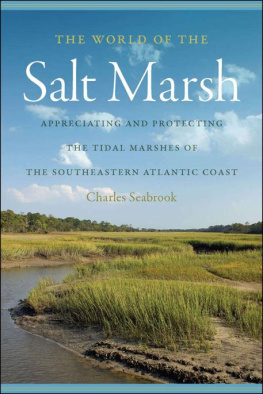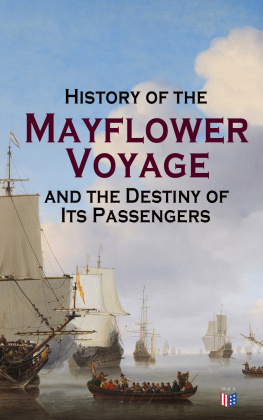Remaking Wormsloe Plantation
SERIES EDITOR
Paul S. Sutter, University of Colorado
ADVISORY BOARD
Judith Carney, University of CaliforniaLos Angeles
S. Max Edelson, University of Virginia
Robbie Ethridge, University of Mississippi
Ari Kelman, University of CaliforniaDavis
Shepard Krech III, Brown University
Tim Silver, Appalachian State University
Mart Stewart, Western Washington University
Remaking Wormsloe Plantation
The Environmental History of a Lowcountry Landscape
Drew A. Swanson
Small passages of were published in Wormsloes Belly: The History of a Southern Plantation through Food, Southern Cultures 15, no. 4 (Winter 2009).
2011 by the University of Georgia Press
Athens, Georgia 30602
www.ugapress.org
All rights reserved
Set in Adobe Garamond by Graphic Composition, Inc.
Printed and bound by Thomson-Shore
The paper in this book meets the guidelines for
permanence and durability of the Committee on
Production Guidelines for Book Longevity of the
Council on Library Resources.
Printed in the United States of America
16 15 14 13 12 C 5 4 3 2 1
Library of Congress Cataloging-in-Publication Data
Swanson, Drew A., 1979
Remaking Wormsloe Plantation : the environmental history of a Lowcountry landscape / Drew A. Swanson.
p. cm. (Environmental history and the American South)
Includes bibliographical references and index.
ISBN-13: 978-0-8203-4177-4 (cloth : alk. paper)
ISBN-10: 0-8203-4177-0 (cloth : alk. paper)
1. Wormsloe Plantation Site (Ga.)History. 2. Wormsloe
Plantation Site (Ga.)Environmental conditions.
3. PlantationsGeorgiaSavannah RegionHistory.
4. Plantation lifeGeorgiaSavannah RegionHistory.
5. LandscapesGeorgiaSavannah RegionHistory. 6. Cultural landscapesGeorgiaSavannah RegionHistory. 7. Landscape changesGeorgiaSavannah RegionHistory. 8. Archaeology and historyGeorgiaSavannah Region. 9. Excavations (Archaeology)GeorgiaSavannah Region. I. Title.
F294.W6S93 2011
975.8724dc23 2011029992
British Library Cataloging-in-Publication Data available
ISBN for this digital edition: 978-0-8203-4377-8
For Margaret and Ethan
CONTENTS
by Paul S. Sutter
FOREWORD
Wormsloe as Palimpsest
Wormsloe Plantation is one of the most significant historical, archaeological, and natural sites in Georgia and the entire Lowcountry, and a major reason for its significance is the propertys integrity and long-term proprietorship. Noble Jones, one of the founding English settlers of Savannah in 1733, was also among the first to apply to the Trustees of Georgia for an outlying plantation, and in 1736 he received permission to occupy and improve what would soon become Wormsloe. Since then the property has been owned and managed by his descendantsthe Jones, De Renne, and Barrow familiesfor a remarkable ten generations, which goes a long way toward explaining why Wormsloe remains intact while all around it seems transformed. But Wormsloe is not only a wonder of historic preservation; it has also been a critical site to the preservation of Georgias history. In the late nineteenth and early twentieth centuries, the De Renne and Barrow families were the most avid and accomplished collectors of Georgiana. Indeed, in 1938 the University of Georgia acquired the bulk of the De Renne Library, which included tens of thousands of rare volumes and precious historical documents. Today that collection forms the core of the universitys renowned Hargrett Rare Book and Manuscript Library. The continuing preservation of Wormsloe and the spirit of preservation that has flowed from the place are testaments to the familys unerring stewardship.
But what exactly has been preserved at Wormsloe, and how ought the property to be interpreted? When you enter Wormsloes imposing front gates and drive along the monumental live oak avenue, more than a mile long, you immediately feel a sense of retreat from the sprawl of Savannah lapping at Wormsloes gates. While the live oaks lining the avenue are clearly products of human design, and of fairly recent provenance, if you wander from their protective tunnel you likely will find yourself in mixed maritime forest and within sight of the expansive marshes characteristic of the Georgia coast. Indeed, Wormsloe seems an island of aboriginal naturalness in a sea of subdivisions and strip malls, and this very naturalness lends the property much of its historical allure. The preservation of this natural landscape, then, surely ranks as another of Wormsloes central points of significance. Wormsloe also preserves important artifacts of the regions precolonial, colonial, and early national history. A short walk from the end of the live oak avenue are the ruins of the original tabby fortification built in the late 1730s or early 1740s by Jones and the detachment of marines that accompanied him to Wormsloe. This was a site of early military significance because it protected a backdoor entrance into Savannah at a time of hostility with Spanish colonies not far to the South. Wander elsewhere and you will find shell middens that betray an even deeper history of Native American occupation and resource use, or substantial earthworks that date to the Civil War, or even a lone surviving slave cabin that speaks of the plantations significance to the history of slavery and the African American experience. It is the breadth and diversity of these artifactsand others yet undiscoveredand the tranquil natural setting in which they rest that together make Wormsloe so evocative of the past.
While nature and history seem to have achieved harmony at todays Wormsloe, that apparent accord obscures a complicated environmental historya history that is the subject of Remaking Wormsloe Plantation, Drew Swansons meticulous reconstruction of the propertys many landscape changes since 1733. While others, most notably E. Merton Coulter and William Harris Bragg, have written about the history of Wormsloes residents, the plantation itself and the history of land use inscribed on it have received little attention, despite the wealth of available documentation. Swanson brings the methods and questions of environmental history to Wormsloe, and what he finds is surprising. The Wormsloe of today, Swanson demonstrates, is the legacy of three centuries of landscape transformation, and its apparently natural condition in fact masks the substantial changes in the land that have occurred during most of its history. Remaking Wormsloe Plantation is an effort to unearth that dynamism, to find in the woods and fields the legacies of that rich history, and to make a start at understanding what this history of constant change all means to the preservation of Wormsloe in the twenty-first century.













